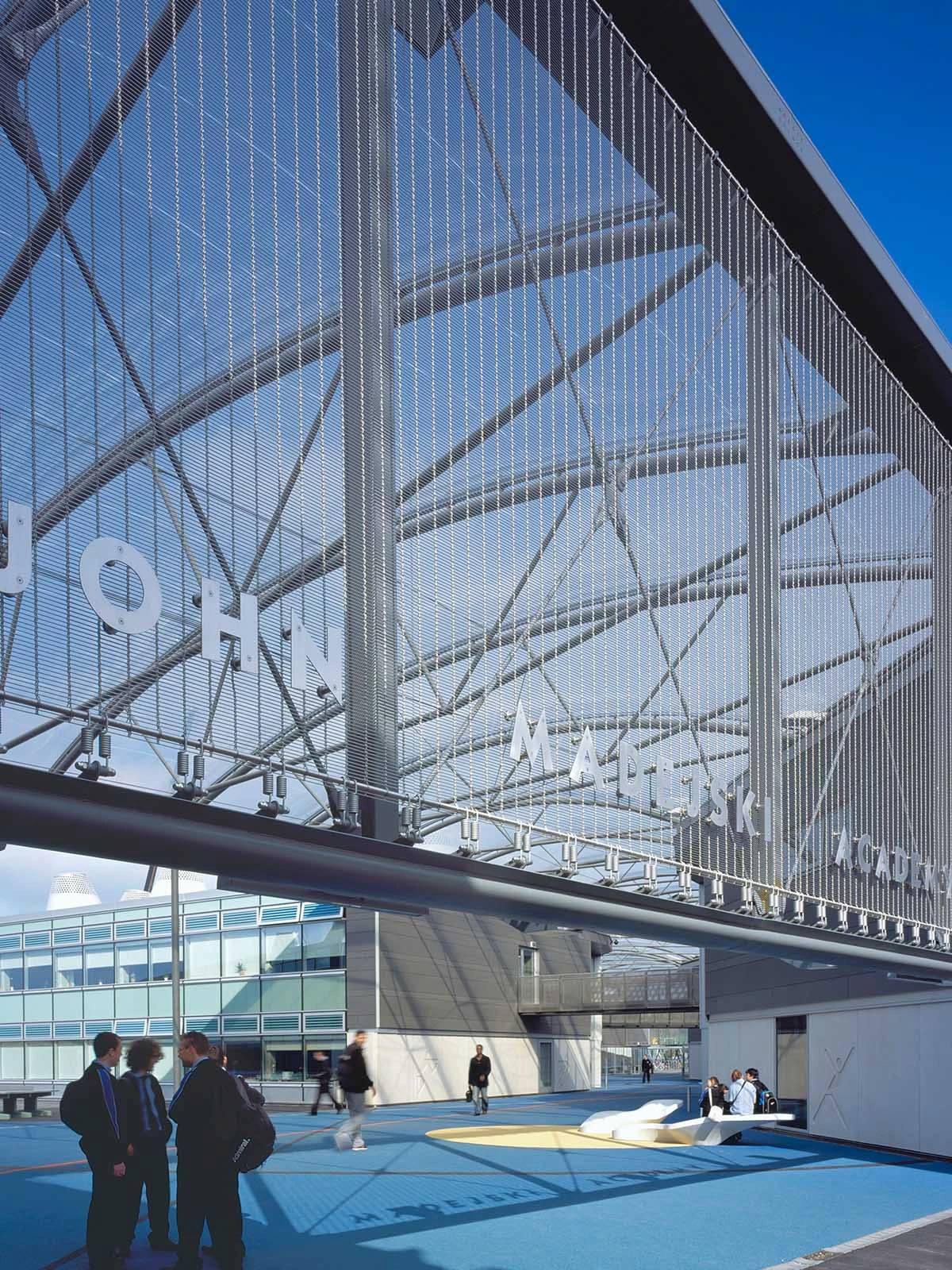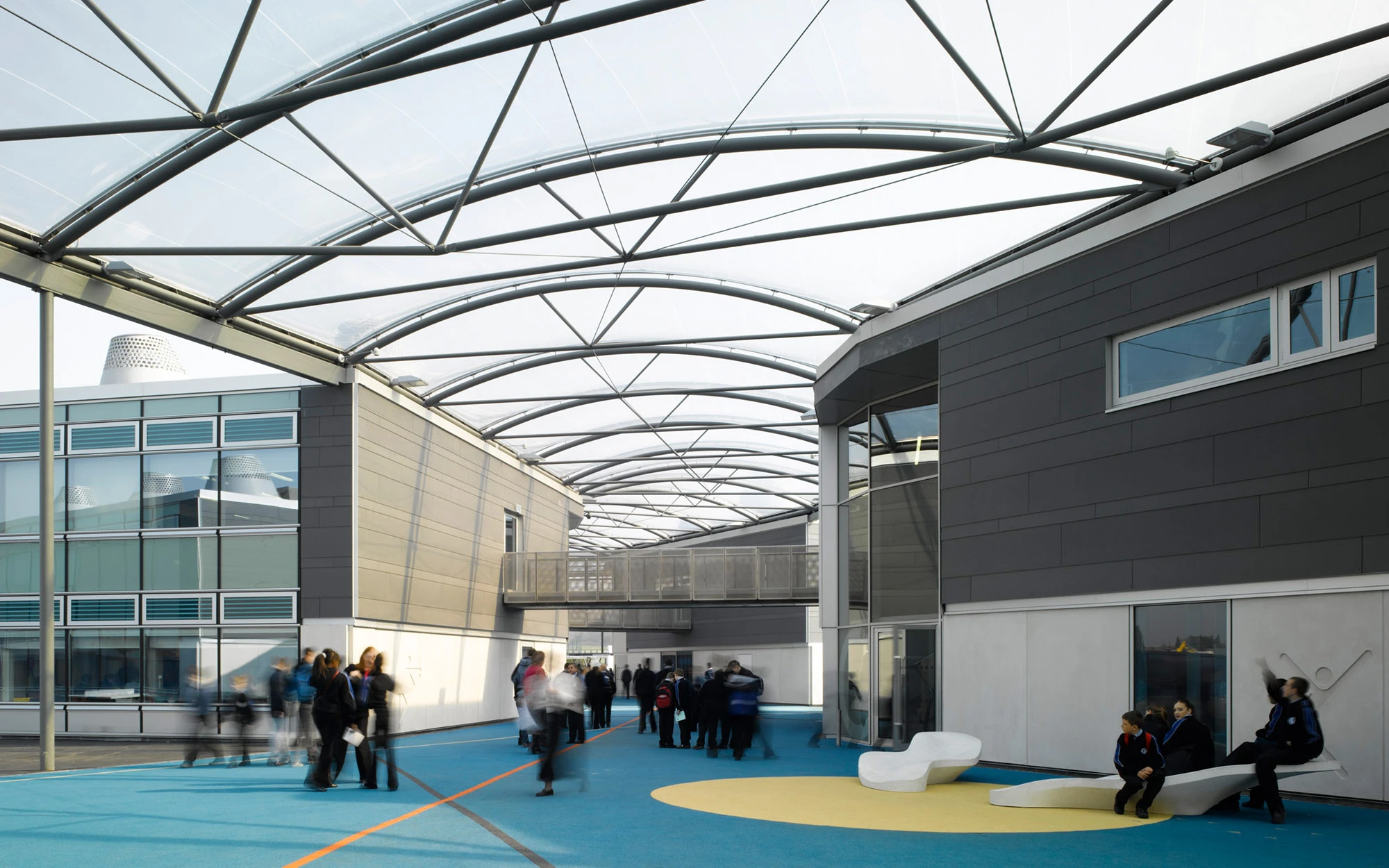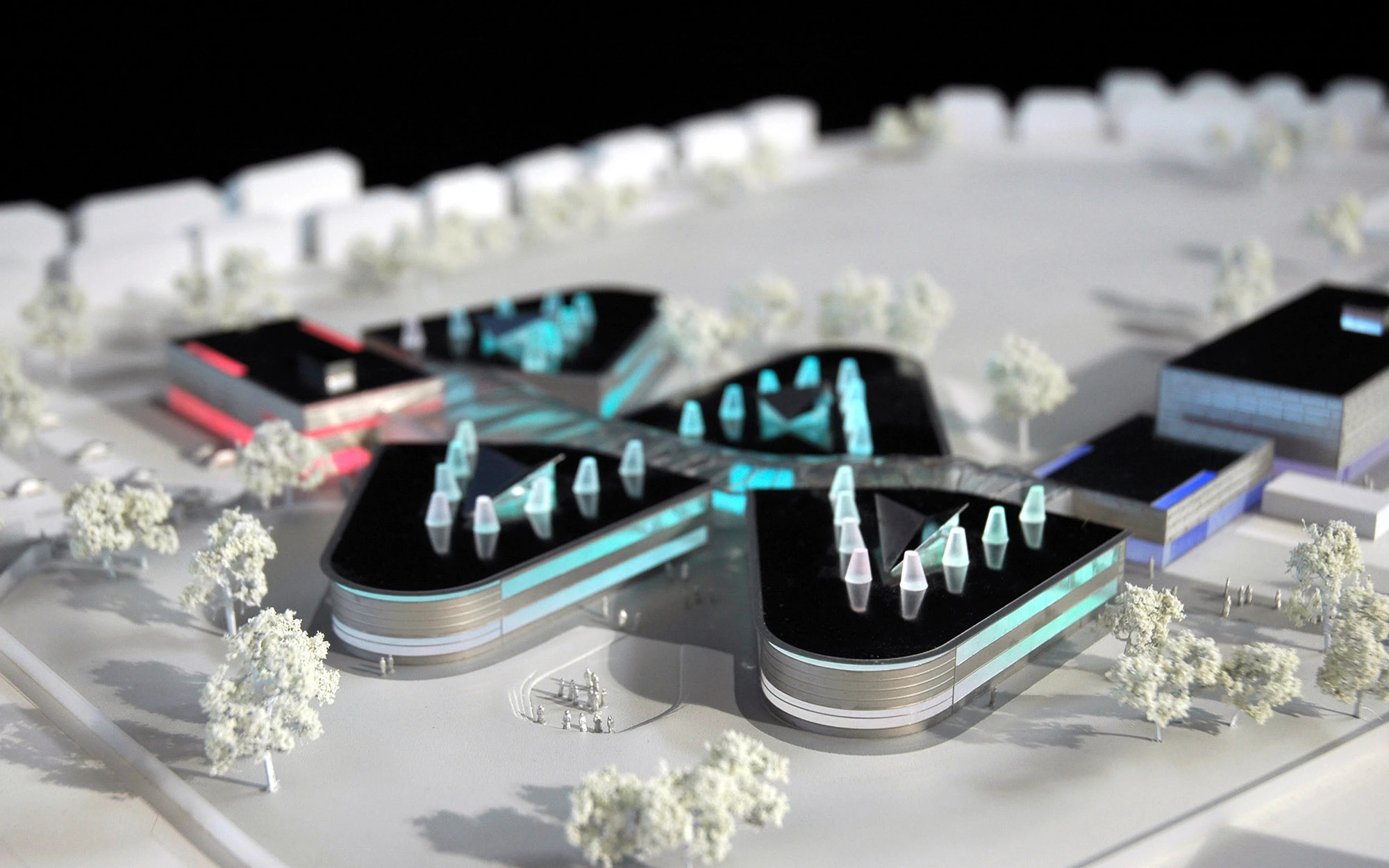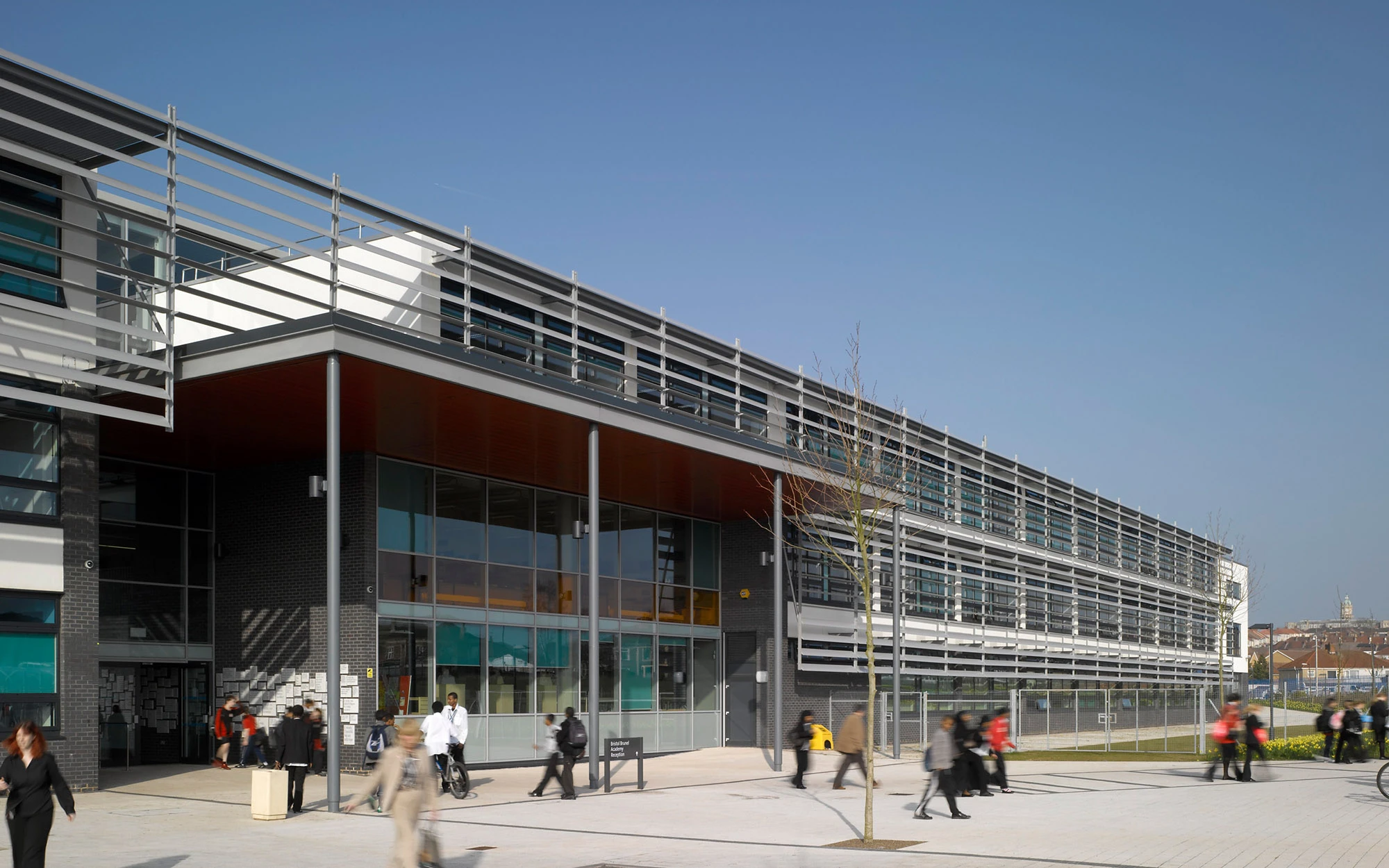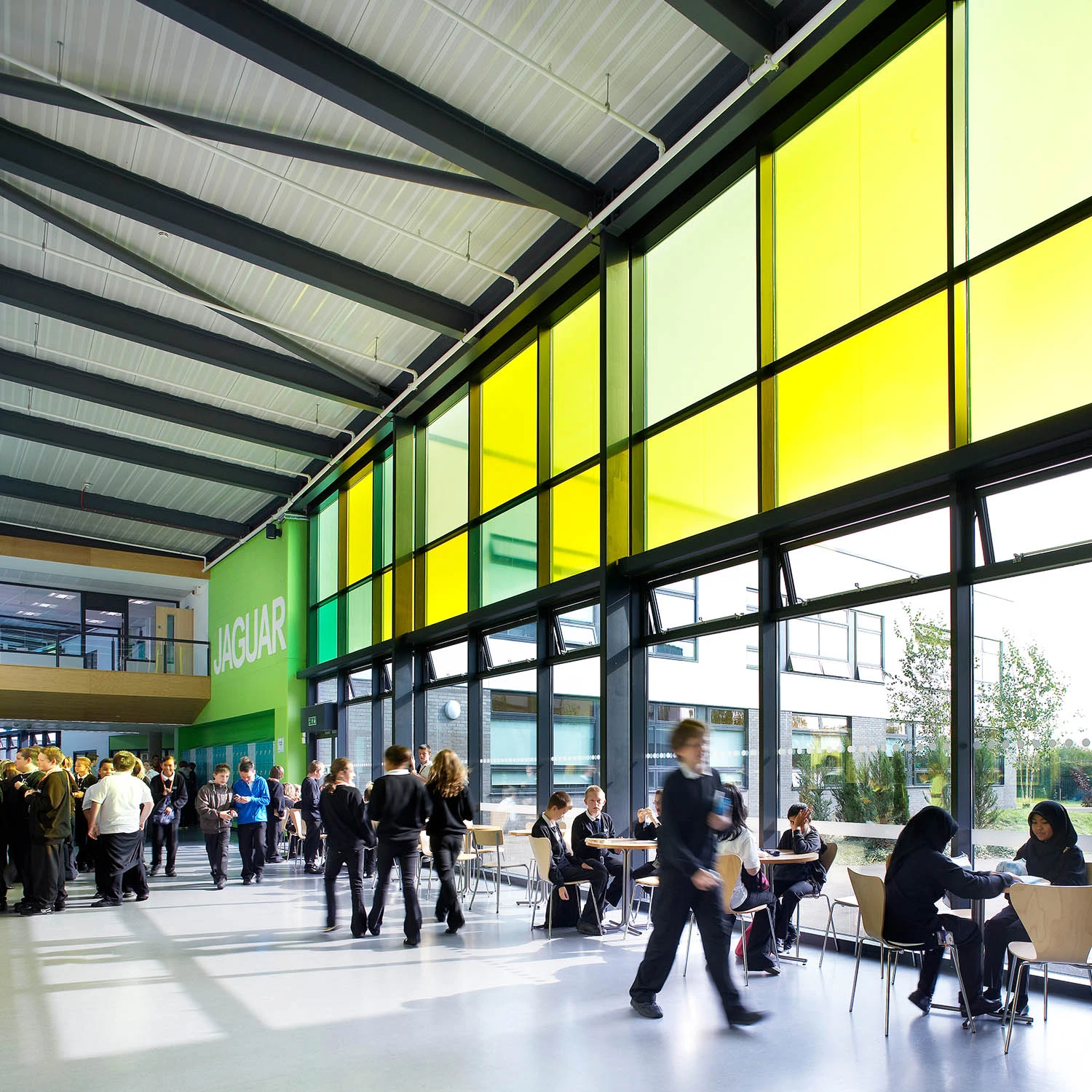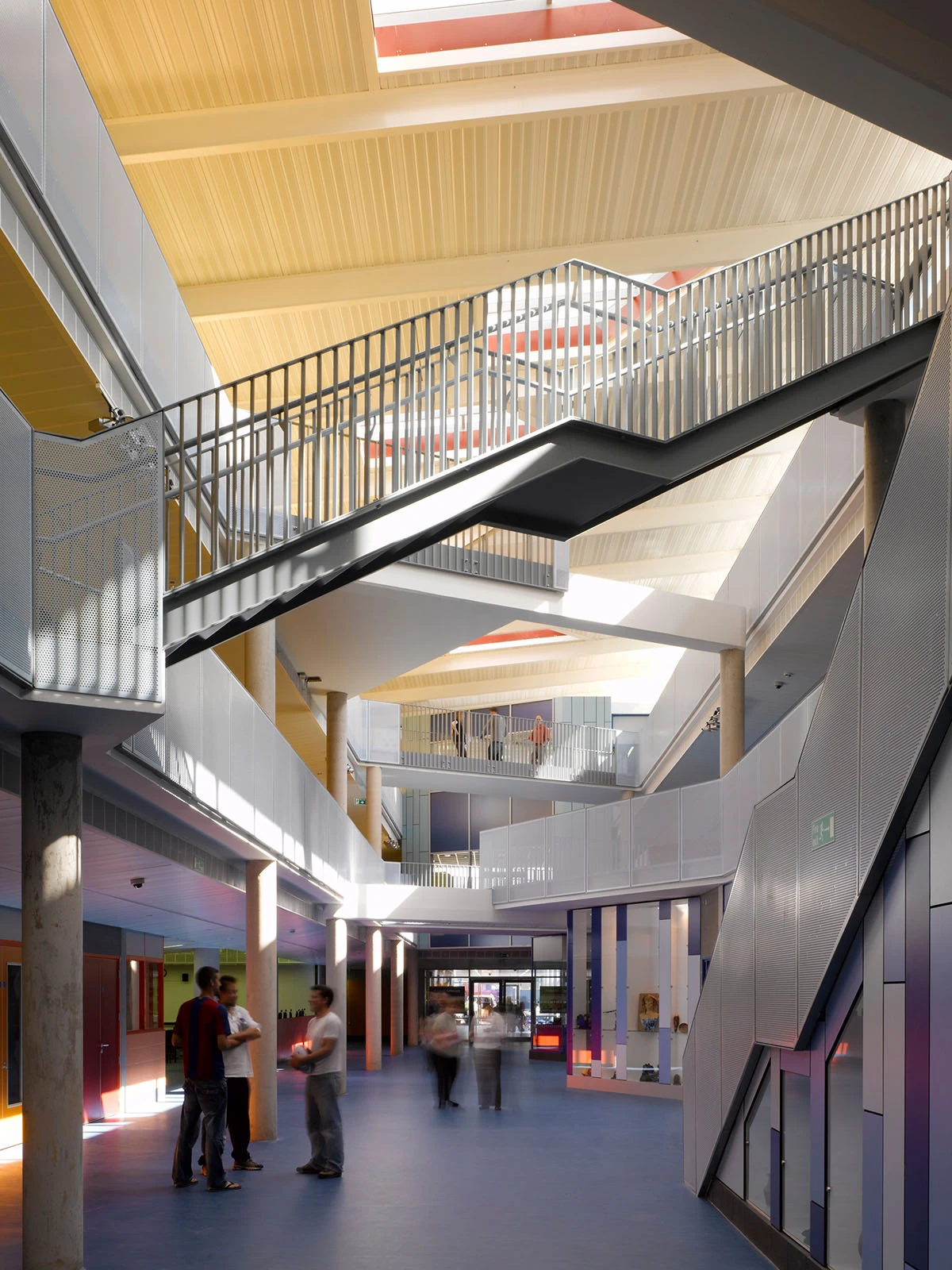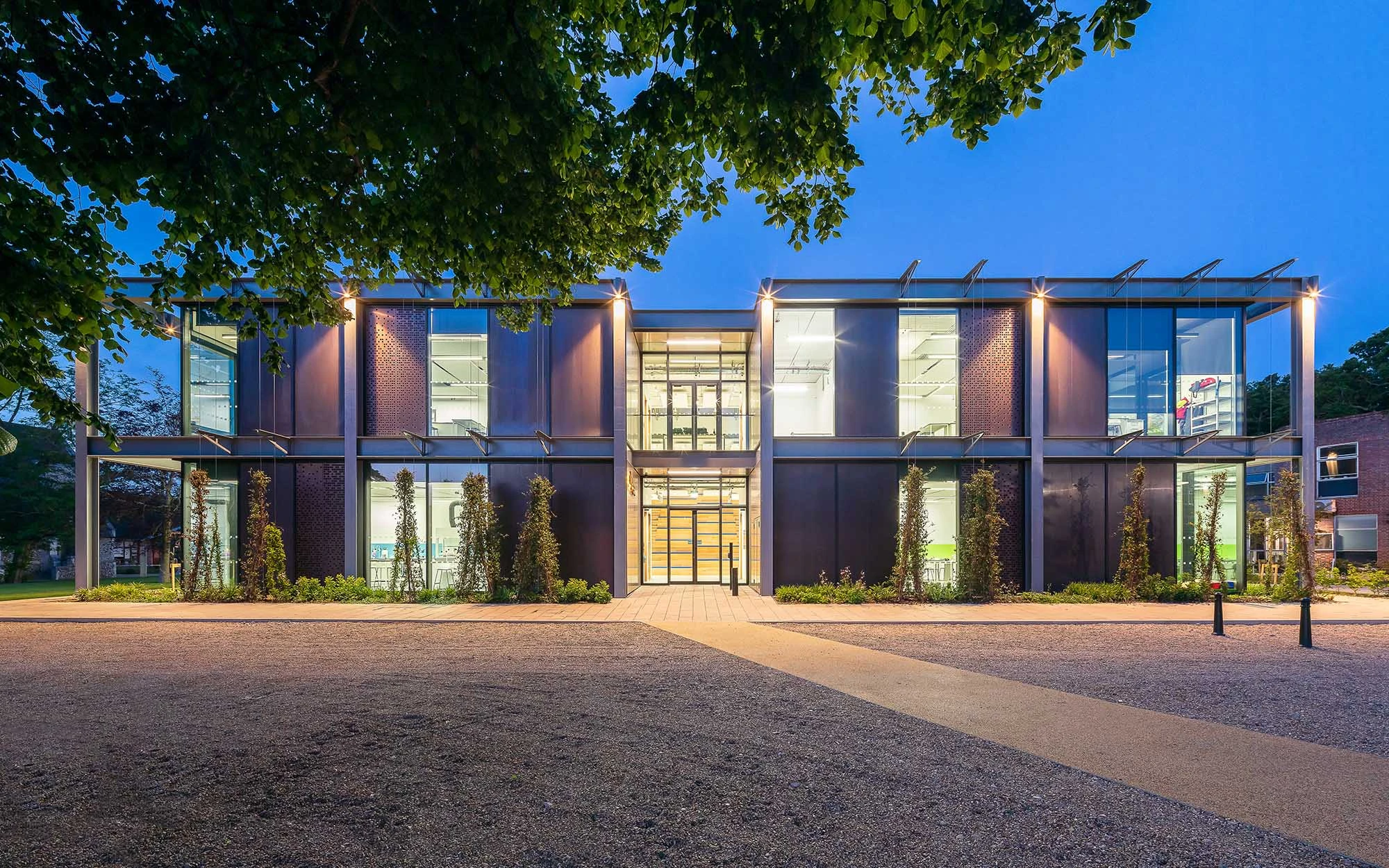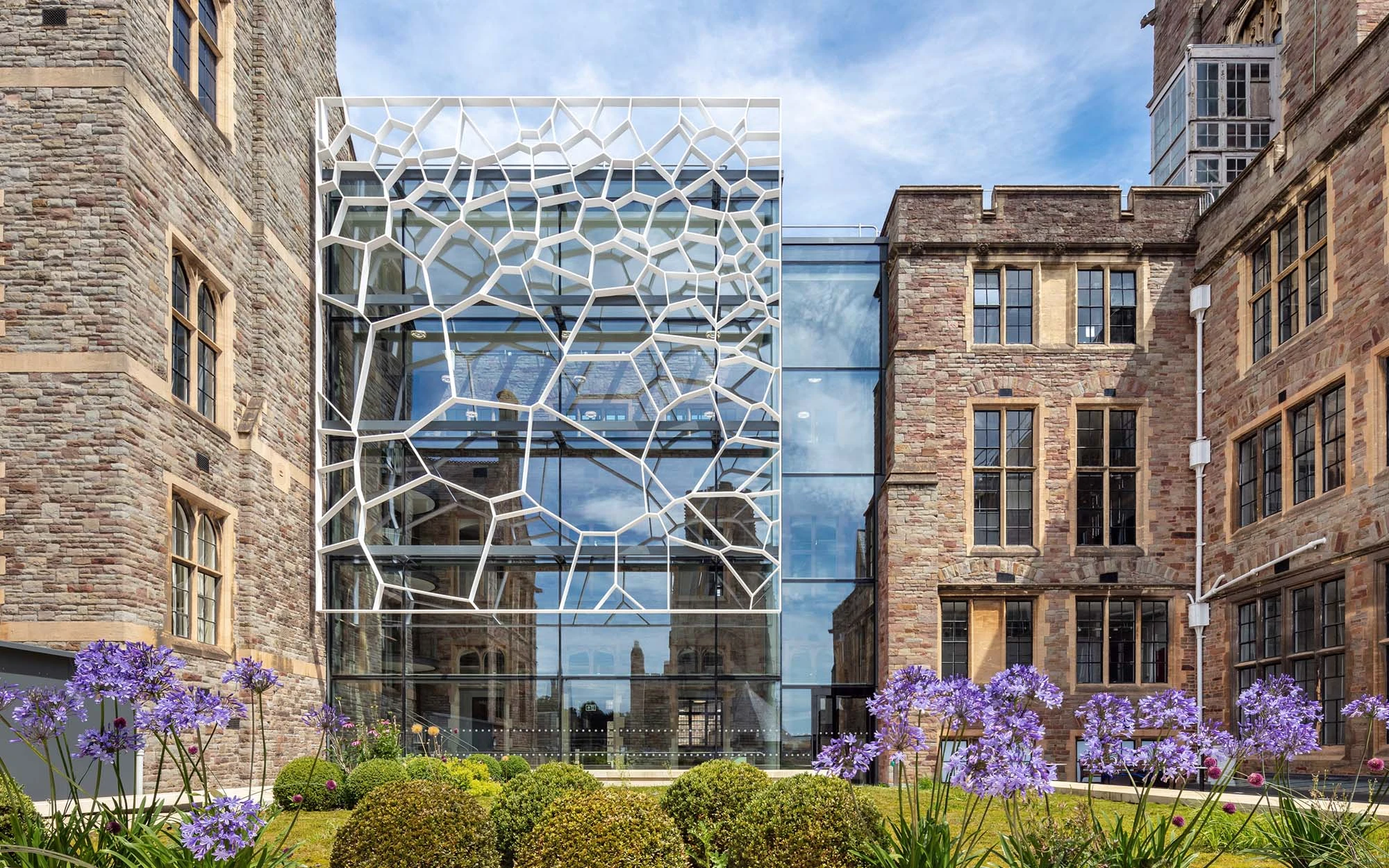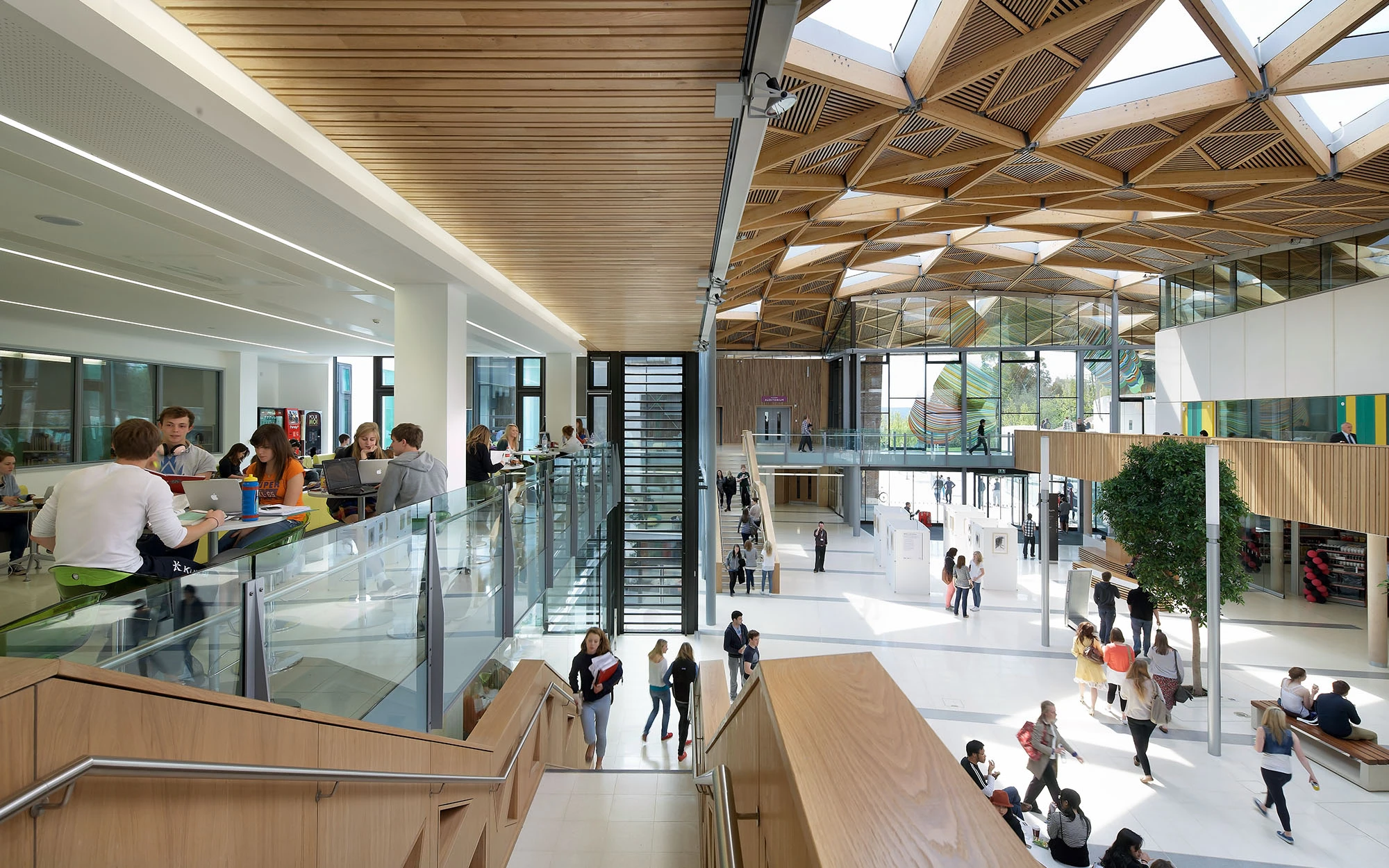The aim was to offer architecture that supported innovative learning and teaching methods as well as providing a stimulating and fun built environment, adopting best practice from schools and other building types.
The team took a kit of parts approach, developing a series of components that could be applied to a variety of different sites and scenarios. The basic building block is a two-storey learning cluster, each housing up to 300 students and arranged around a central agora, inspired by the ancient Greek marketplace.
The same team was then appointed by John Madejski, owner of Reading Football Club, to apply this exemplar scheme to the design of his John Madejski Academy in Reading, which opened in 2007. The Academy is organised on a radial non-departmental basis with each cluster acting as a school-within-a-school, thereby reducing movement around the site and providing an identifiable home base for pupils.
The kit of parts was subsequently adopted by four schools in Bristol, as part of the city-wide BSF programme. Bristol Metropolitan Academy used the system to build three two-storey learning clusters arranged by academic department, which are located along the straight side of an internal street and face flexible spaces that house specialist areas and a sports hall.
At the Bridge Learning Campus, three learning clusters form part of one of the UK's very few all-through schools. Here, a pre-school, primary and secondary are combined with a severe learning difficulties unit and a student support centre for the rehabilitation of excluded pupils.
WilkinsonEyre was also involved in the design of two further schools in Bristol. These were the Bristol Brunel Academy, the first secondary school in the UK to be delivered under the BSF programme and configured as a linear building over four floors around a central atrium, and Brislington Enterprise College.

